![算术教程(英文版) [A Course in Arithmetic]](https://pic.windowsfront.com/10184600/1a97631e-9708-4b40-8528-23dce5afd968.jpg)

具体描述
内容简介
The first one is purely algebraic. Its objective is the classification ofquadratic forms over the field of rational numbers (Hasse-Minkowskitheorem). It is achieved in Chapter IV. The first three chapters contain somepreliminaries: quadratic reciprocity law, p-adic fields, Hilbert symbols.Chapter V applies the preceding results to integral quadratic forms indiscriminant + 1. These forms occur in various questions: modular functions,differential topology, finite groups. The second part (Chapters VI and VII) uses "analytic" methods (holomor-phic functions). Chapter VI gives the proof of the "theorem on arithmeticprogressions" due to Dirichlet; this theorem is used at a critical point in thefirst part (Chapter 111, no. 2.2). Chapter VII deals with modular forms,and in particular, with theta functions. Some of the quadratic forms ofChapter V reappear here.内页插图
目录
PrefacePart I-Algebraic Methods
ChapterI Finite fields
1-Generalities
2-Equations over a finite field
3-Quadratic reciprocity law
Appendix-Another proof of the quadratic reciprocity law
Chapter II p-adic fields
1-The ring Zp and the field
2-p-adic equations
3-The multiplicative group of
Chapter II nHilbert symbol
1-Local properties
2-Global properties
Chapter IV Quadratic forms over Qp and over Q
1-Quadratic forms
2-Quadratic forms over Q
3-Quadratic forms over Q
Appendix Sums of three squares
Chapter V Integral quadratic forms with discriminant
1-Preliminaries
2-Statement of results
3-Proofs
Part II-Analytic Methods
Chapter VI-The theorem on arithmetic progressions
1-Characters of finite abelian groups
2-Dirichlet series
3-Zeta function and L functions
4-Density and Dirichlet theorem
Chapter Vll-Modular forms
1-The modular group
2-Modular functions
3-The space of modular forms
4-Expansions at infinity
5-Hecke operators
6-Theta functions
Bibliography
Index of Definitions
Index of Notations
前言/序言
This book is divided into two parts.The first one is purely algebraic. Its objective is the classification ofquadratic forms over the field of rational numbers (Hasse-Minkowskitheorem). It is achieved in Chapter IV. The first three chapters contain somepreliminaries: quadratic reciprocity law, p-adic fields, Hilbert symbols.Chapter V applies the preceding results to integral quadratic forms indiscriminant + 1. These forms occur in various questions: modular functions,differential topology, finite groups. The second part (Chapters VI and VII) uses "analytic" methods (holomor-phic functions). Chapter VI gives the proof of the "theorem on arithmeticprogressions" due to Dirichlet; this theorem is used at a critical point in thefirst part (Chapter 111, no. 2.2). Chapter VII deals with modular forms,and in particular, with theta functions. Some of the quadratic forms ofChapter V reappear here.
The two parts correspond to lectures given in 1962 and 1964 to secondyear students at the Ecole Normale Superieure. A redaction of these lecturesin the form of duplicated notes, was made by J.-J. Saosuc (Chapters l-IV)and J.-P. Ramis and G. Ruget (Chapters VI-VIi). They were very useful tome; I extend here my gratitude to their authors.
用户评价
拿到《A Course in Arithmetic》这本书,我首先想到的是它在培养数学思维方面可能起到的作用。我一直认为,学习数学不仅仅是记住公式和定理,更重要的是培养逻辑思维、抽象思维和解决问题的能力。这本书会不会从一个全新的角度,来阐述数学的严谨性和美感?我非常好奇它是否会包含一些关于数学史的片段,例如某些重要数学概念是如何被发现和发展的,或者一些著名的数学难题以及它们的解法。这有助于我理解数学的演进过程,并从中获得启发。同时,我也希望这本书能介绍一些数学证明的基本方法和技巧,例如反证法、数学归纳法等,这些方法对于理解数学的逻辑体系至关重要。我一直觉得,掌握了这些证明技巧,就能更深刻地理解数学的本质。此外,我对书中是否会涉及一些计算的数值方法,或者一些与计算机科学相关的基础数学概念有所期待,因为这些都是现代数学中非常重要的组成部分。我相信,这本书的内容,一定能帮助我构建一个更全面、更深入的数学知识体系,并激发我对数学的持久兴趣。
评分这本书的封面设计就带着一种复古的、严谨的气息,仿佛能闻到纸张和油墨混合在一起的淡淡味道。我一直对数学,尤其是那些基础却又充满魅力的算术概念情有独钟,总觉得它们是构建整个数学大厦的基石。拿到这本《A Course in Arithmetic》时,我脑海里闪过无数关于数字、运算、集合、数的整除性、同余等等基础概念的片段。我非常期待这本书能够以一种系统而又不失趣味的方式,带我回顾并深入理解这些曾经熟悉的理论。我设想着,它会不会像一位老朋友,用一种温和而充满智慧的语言,一点点剥开这些数学真理的面纱,让我看到它们在不同情境下的妙用?或者,它是否会引入一些我从未接触过的、但又与算术紧密相关的进阶概念,从而拓宽我的数学视野?我好奇它在处理一些经典数学问题时,会采用怎样的角度和方法,是否会提供一些巧妙的解题思路。此外,我对作者的教学风格也非常感兴趣,究竟是偏重理论的严谨推导,还是更侧重于直观的理解和应用?这本书的内容,我相信一定能激发我更多的思考,让我重新审视那些看似简单的算术原理背后隐藏的深刻逻辑。
评分我收到这本书《A Course in Arithmetic》的时候,脑海中就浮现出那些在黑板上写满公式的场景,以及老师循循善诱讲解的画面。我一直相信,学习数学的乐趣在于理解那些看似抽象的概念如何映射到现实世界。这本书会不会深入探讨一些基础代数概念,比如方程的求解,不等式的性质,以及函数的基本思想?我非常期待它能以一种易于理解的方式,将这些代数工具介绍给我。此外,关于数列的求和、级数收敛性的初步概念,以及它们在微积分或其他数学分支中的应用,我希望这本书能有所触及。我曾经遇到过一些数学问题,它们似乎都与基础的算术运算有着千丝万缕的联系,却又需要更高级的思维方式去解决。我希望这本《A Course in Arithmetic》能够提供一些指导,让我能够灵活运用所学的算术知识,去攻克那些更具挑战性的数学难题。我相信,这本书的内容,一定能帮助我提升我的数学解题能力,并培养我独立思考和解决问题的能力。
评分当我翻开《A Course in Arithmetic》这本书时,首先吸引我的是它清晰的章节划分和逻辑流畅的编排。我一直认为,学习任何知识,尤其像数学这样严谨的学科,清晰的结构是至关重要的。这本书的标题“A Course in Arithmetic”本身就预示着它将带领读者进行一次系统性的学习旅程。我特别关注它是否会对基本算术运算进行深入剖析,例如加减乘除的性质、运算定律的证明,以及它们在实际问题中的应用。我还希望它能涵盖一些数论的基础内容,比如素数、合数、因数、倍数、最大公约数和最小公倍数等概念的定义、性质以及相关的算法。关于整除性和同余理论,我一直觉得它们是通往更深层次数学世界的关键,因此我非常期待在这本书中能看到它们被如何清晰地阐述和讲解。同时,我也对书中是否会引入一些关于数学归纳法、鸽巢原理等证明技巧有所期待,这些技巧对于理解和掌握数学概念至关重要。这本书的内容,我认为会为我构建一个坚实的数学基础,并为我进一步探索更复杂的数学领域打下坚实的基础。
评分这本《A Course in Arithmetic》给我的第一印象是它似乎提供了一种与我过去学习数学截然不同的视角。我曾想过,它会不会像一本精美的数学工具箱,里面陈列着各种各样的算术概念和定理,而我需要做的就是从中挑选出最适合解决当下问题的工具。我想象中,这本书可能会包含一些对数、指数、对数运算的详细介绍,以及它们在解决增长、衰减问题中的应用。另外,关于概率与统计的基础,虽然它们并非纯粹的算术,但与算术紧密相关,我希望这本书能在这方面有所涉及,例如排列组合的计算,以及基础的概率模型。还有,我一直对数系的扩展非常感兴趣,从自然数到整数,再到有理数、实数,甚至复数,每一步的演进都蕴含着深刻的数学思想。这本书是否会带领我领略数系发展的脉络,以及不同数系之间的联系和区别?我期待它能帮助我建立更全面的数学知识体系,不仅仅是停留在表面的计算,而是能够理解数学概念背后的深刻含义和内在逻辑。
评分读者有一定的基本同调代数和代数拓扑知识就可以理解本书。每章末都附有练习,这些可以帮助学生更好的理解书中的知识体系。附录给出了部分习题的解答。第二版中在内容上做了较大的改动,增加了80多例子和大量更深层次的内容,如,Cech上同调、Oliver变换、插值理论、广义流形、局部齐性空间、同调纤维和p进变换群。目次:层和准层;层上同调;与其他上同调定理的比较;谱序列的应用;Borel-Moore同调;上层和ech同调。
评分物流快,货品质量好,推荐京东!
评分看看歪果仁怎么讲算术。
评分国外系统地整理前人数学知识的书,要算是希腊的欧几里得的《几何原本》最早。《几何原本》全书共十五卷,后两卷是后人增补的。全书大部分是属于几何知识,在第七、八、九卷中专门讨论了数的性质和运算,属于算术的内容。
评分商品不错!商品不错!商品不错!商品不错!商品不错!商品不错!商品不错!商品不错!商品不错!商品不错!商品不错!商品不错!商品不错!商品不错!商品不错!商品不错!
评分Springer的书必属经典
评分算术教程(英文版),很不错的好书,和期待。
评分本书主要讲述具有一般系数体系拓扑空间的上同调理论。层论包括对代数拓扑很重要的领域。书中有好多创新点,引进不少新概念,全书内容贯穿一致。证实了广义同调空间中层理论上同调满足同调基本特性的事实。将相对上同调引入层理论中。
评分算术的基础在于:整数的加法和乘法服从某些规律。为了要叙述这些具有 普遍性的规律,我们不能用像1,2,3这种表示特定数的符号。两个整数,不管它们的次序如何,它们的和相同。而
相关图书
本站所有内容均为互联网搜索引擎提供的公开搜索信息,本站不存储任何数据与内容,任何内容与数据均与本站无关,如有需要请联系相关搜索引擎包括但不限于百度,google,bing,sogou 等
© 2025 book.coffeedeals.club All Rights Reserved. 静流书站 版权所有

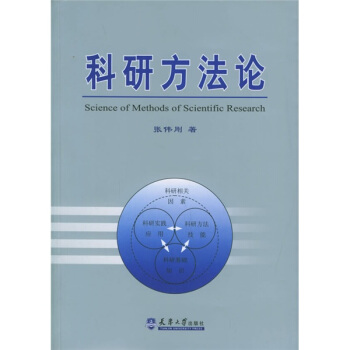



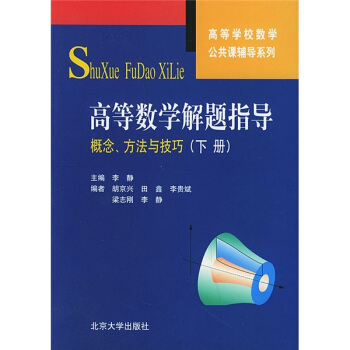


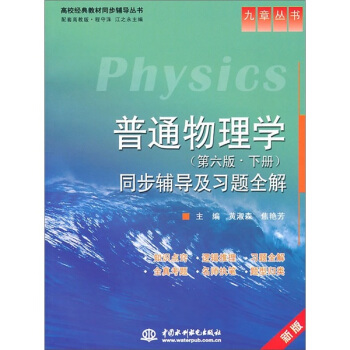


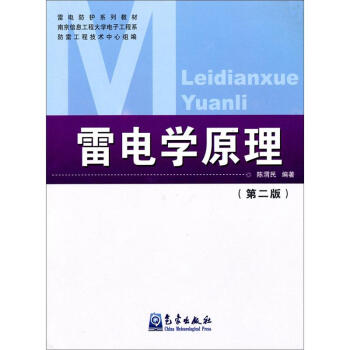
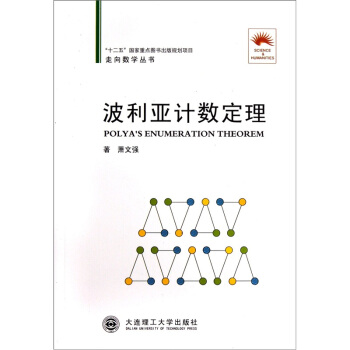





![生态水文学·过程、模型和实例:水资源可持续管理的方法 [Ecohydrology:Processes,Models and Case Studies] pdf epub mobi 电子书 下载](https://pic.windowsfront.com/11017645/rBEIC0_xdj0IAAAAAAFjdJF-wksAADmRwJpkRAAAWOM516.jpg)
![高等量子力学(第4版)(英文版) [Advanced Quantum Mechanics(4th Edition)] pdf epub mobi 电子书 下载](https://pic.windowsfront.com/11110548/rBEHaVCN4t8IAAAAAADUQ1kt8j0AAChSwN_rHQAANRb998.jpg)
